After the Spaniards captured the city for the last time on Aug. 13th of 1521, they burned the Aztec city and then covered it with dirt. Mexico City is built directly on top of Tenochtitlan.
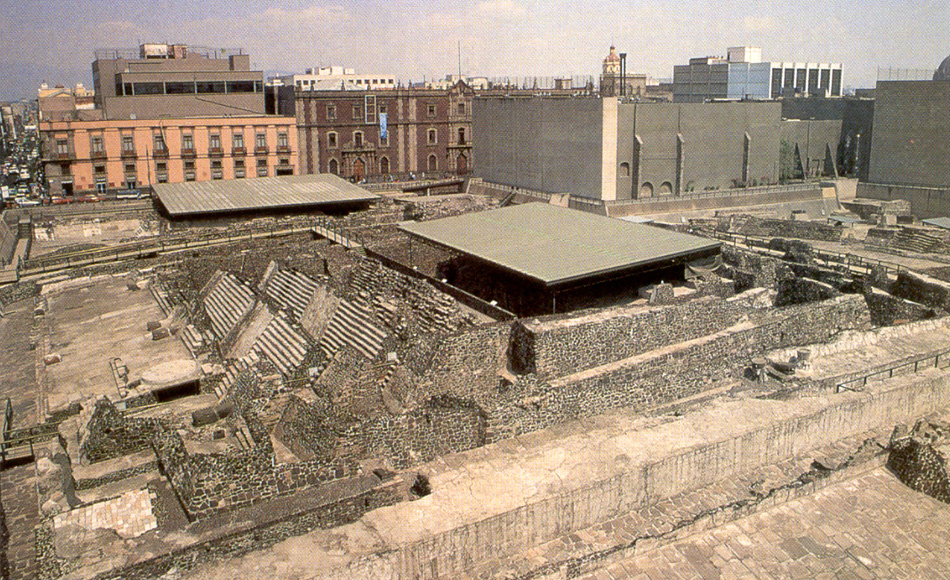 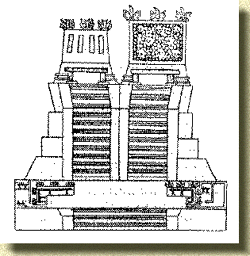
The Templo Mayor or "Huey Teocalli." The home of the great Hummingbird God HUITZILOPOCHTLI and the center of the Noche Triste. A description by Bernal de Diaz:
"...we left the great plaza without seeing it anymore and we got to the large patios and fences where the great CU (TEOCALLI) is; and there was a great circuit of patios, before getting there that seemed to be more numerous than in the plaza o Salamanca, and with two fences around it, whitewashed, and the patio and all the area around it was dappled with large white polished stones, and where there were no stones everything was whitewashed and polished in such a way that none of us found a stick nor dust on it at all. And since we came near the great CU, before we climbed a step, the great Moctezuma from up there, where they were making sacrifices, six PAPAS and two PRINCIPALES (priests) to accompany our captain, and in the process of climbing the steps, 114 in total, they were going to hold him by the arms, thinking he would get tired, just as they helped their lord Moctezuma, but Cortes did not want them to aproach him.[...]And then he took him by the hand (Moctezuma) and told him to look at his great city and all the other cities that were on the water, and many other towns that were around the same lake, on the land; and that if we had not seen his great plaza, that from up here he could see very well, and like that we stood looking, because from that big and damned temple that was so tall that he could brag everything quite well..."
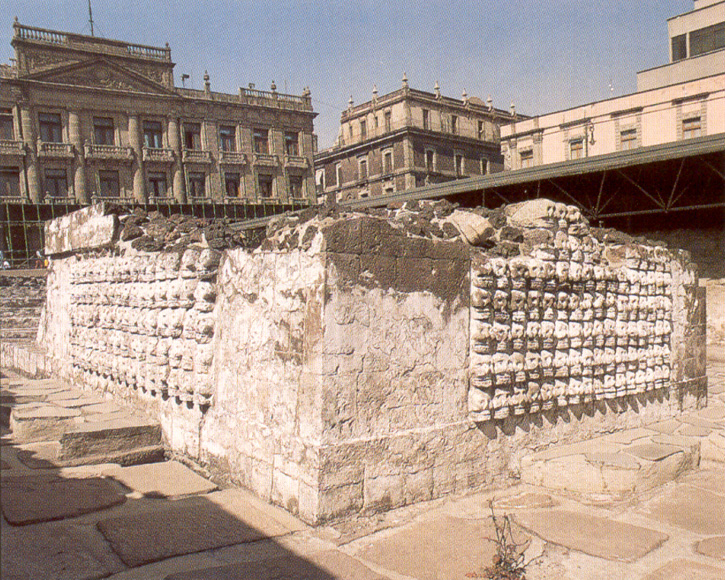
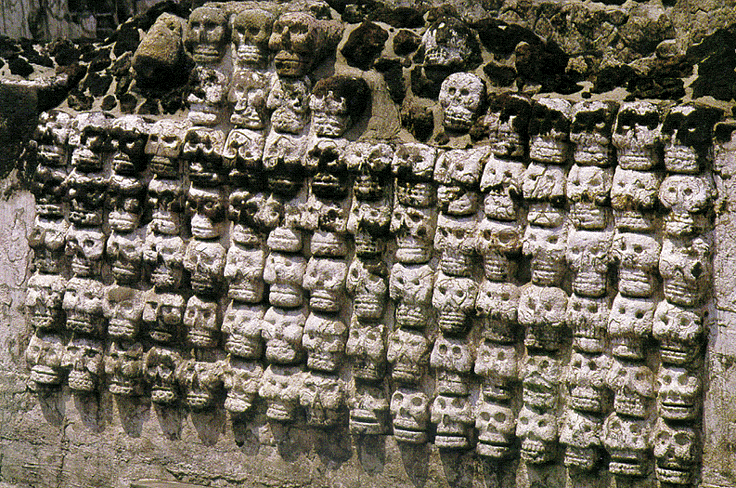
The skull rack or TZOMPANTLI, sat atop the Templo Mayor. It signified the number of sacrifices offered to the Gods. Each skull was carved unlike the other on purpose.
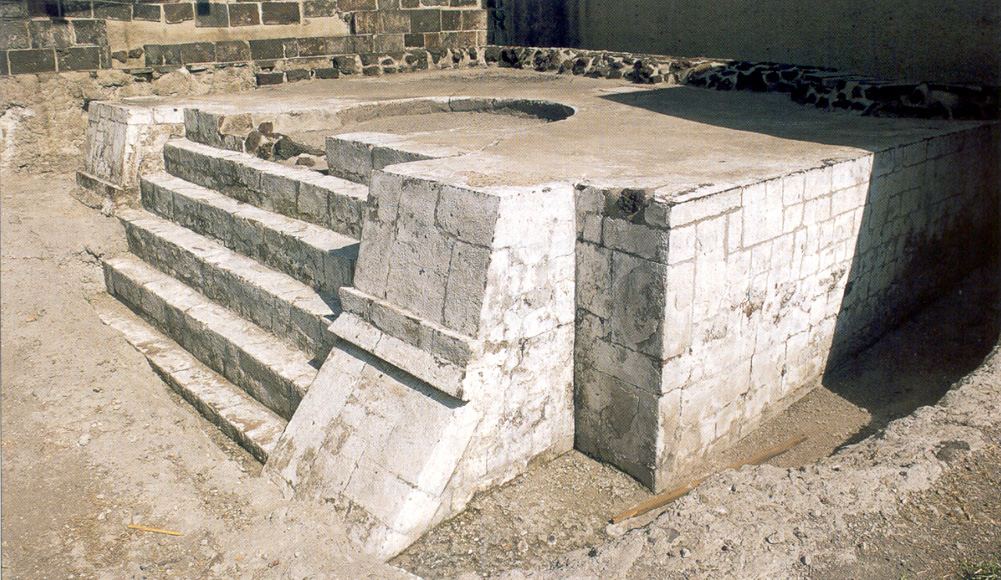
"Altar D," is one of the many sacrificial platforms burried by the Spanish. The circle in the middle would hold a statue meant to hold the heart of the sacrificed person. Notice the notch cut into the rock to allow the blood to flow down the steps.
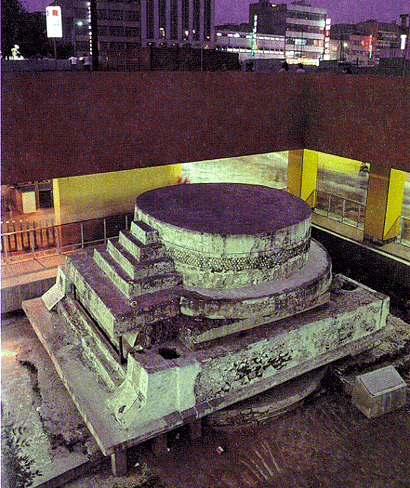 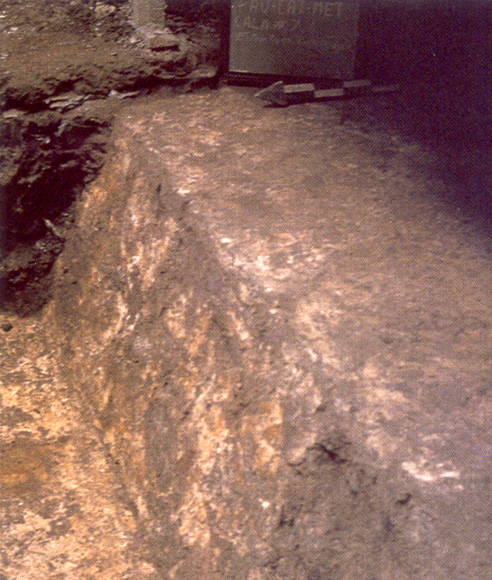
"TEMALACATL" is a Cilinder for the Gladiatory Sacrifice. And on the right is a portion of the ball court. Here is a description of how the gladitorial sacrifices were held. After a drawn out dance in the "heavens" the warriors come down to the altar and this is what follows: "And when they had come down below, on the ground, on the earth, they gathered around the circular, flat, sacrificial stone; they seated themselves according to rank on large chairs called quecholicpalli. And when they were seated, when they were arranged according to their importance, again the first in order was the chief priest, the Youallauan; because it was his right, his office, that he should slay, offer as sacrifice, [that] with his hands he should destroy - with his hands hack open each of the captives destined for sacrifice. When this was done, then trumpets were sounded; conch shells, large sea shells, were blown; men put their fingers in their mouths and whistled, and there was singing. With singing of songs and blowing of trumpets they arrived. The Cozcateca placed themselves in order, their shoulders decked with feather banners, and they encircled the offering-stone. One [of the captors] quickly seized a captive. The captor, he who owned the captive, seized him by the head to bring him to the offering-stone. When he had brought him there, he offered him wine; and the captive raised the wine four times [as an offering], and afterwards drank it with a long hollow gourd. Then still another man, [a priest] came out and cut the throat of a quail for the captive, him who was to be offered as a sacrifice; and when he had beheaded the quail, he raised [to the sun] the captive's shield, and cast the quail away, behind him. Having done this, then they made [the captive] climb upon the round sacrificial stone; and when they had lifted him on the offering-stone, the wolf [priest] came up to him, representing [a wolf], and known as "Old Wolf." [He came forth] as the uncle of the captive destined for the sacrifice. Then he took the rope holding the captive, which reached and was attached to the center [of the stone]; then he tied it about the waist of the captive. And he gave him a war club, decked with feathers and not set with obsidian blades. And he placed before him four pine cudgels, his missiles, with which to lay about him, with which to defend himself. And the captor when he had left his prisoner on the offering-stone, thereupon went away [to the place where] he had stood [before]. He stood dancing, looking upon, and studying, his captive. Then [the fight] was begun; the contest [was started]. Carefully they studied where they would smite him in a dangerous place, and cut him - perchance the calf of the leg, or the thigh, or him head, or his middle. And if some captive was valiant and courageous, with great difficulty he surpassed [his adversary]. He met and fought all four of the ocelot and eagle [warriors]. And if they could not weaken him, then came one who was left-handed. He then wounded his arm and threw him flat upon the surface. This one appeared as [the god] Opochtli. And although the captive might falter and faint, yet he acquitted himself as a man. And when one went faltering, sinking down on all fours, reeling and overcome in the fray, uselessly and vainly holding the war club, which they snatched from him, thus his adversaries contended with him. And this useless one could now no longer do more; no more could he use his hands; no longer make himself do anything. No longer did he move; he did not speak. then, faltering and fainting, he fell upon the surface, tumbling as if dead. He wished that he might stop breathing, that he might suffer [no longer], that he might perish, that he might cast off his burden of death. And thereupon they quickly took and seized him, pushed him, and dragged him, and raised and stretched him out upon the edge of the round sacrificial stone. And then, when the Youallauan went [forth], in the guise of Totec, he gashed [the captive's] breast, seized his heart, and raised it as an offering to the sun; and the priests placed it in the eagle vessel. And another man, a priest, carried the [hollow] eagle cane and set it in the breast of the captive, there where the heart had been; he stained it with blood; he submerged it well into the blood. Thereupon he offered [the blood] to the sun. It was said: "Thus he giveth [the sun] to drink." And the captor thereupon took the blood of his captive into a green bowl with a feathered rim."
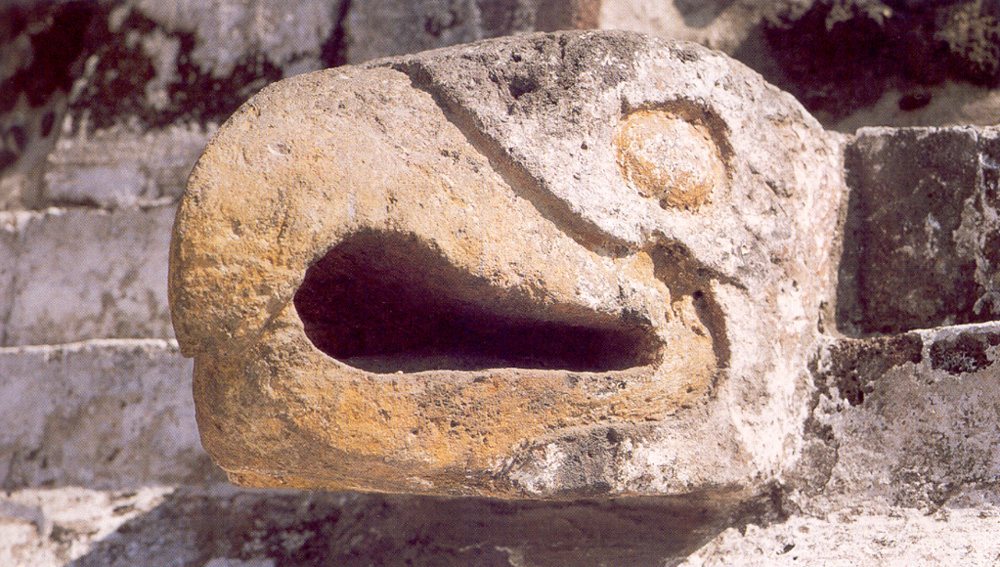
The House of the Eagle where the warriors prepared, spiritually, for battle. It was called QUAUCALLI.
HOME

|







